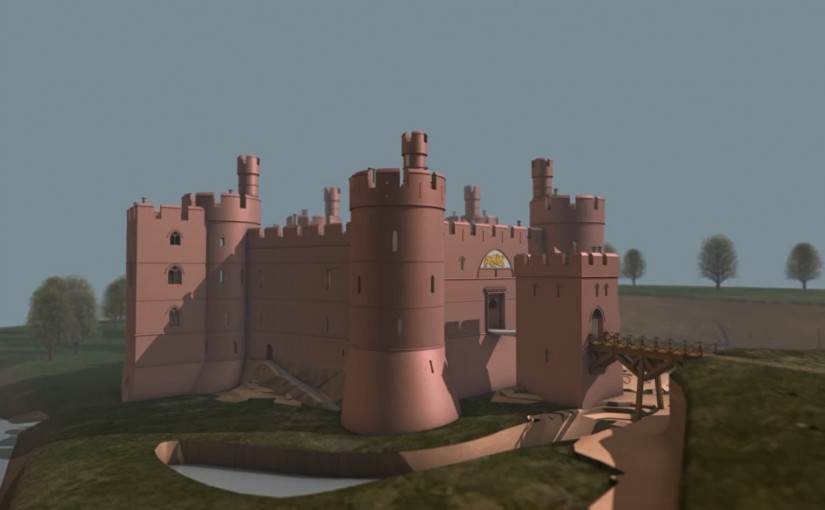Holt Castle was built in north Wales by John de Warenne, the Earl of Surrey, and dates from an age in which the country was transformed. Edward I’s campaign to conquer the Welsh in the 1280s led to the creation of towns and some of its most iconic castles.
The great sandstone walls were once owned by royalty. Richard II confiscated Holt Castle in 1397 and under his ownership the castle was revitalised. It became one of his favourite properties and he used it as a treasure house, storing £40,000 there. If it wasn’t for the Civil War of the 17th century Holt’s unusual pentagonal design and imposing architecture would have made it as recognisable as Beaumaris, Caernarfon, or Harlech.
Instead in the 1640s Holt Castle was demolished and its stone used to build Eaton Hall. Centuries on, it is hard to picture how this once great castle would have appeared. To help with this the Castle Studies Trust supported Rick Turner and Chris Jones-Jenkins in digitally recreating Holt as it would have appeared around 1495.
If you have been following our work, you may already have seen in Current Archaeology or BBC History Extra how Rick and Chris brought together a range of sources to create this unique model. If you haven’t, those pieces are certainly worth a read.
It is important that what we do is available for everyone. That is why when our projects are complete you can find the results on our website. With this model it has even been published under an open licence so it is free to reuse. This can lead down some interesting avenues. One blogger, Megan Whalen Turner, even been called “A perfect starter home for Fantasy Authors”!
As well as video sharing websites we also uploaded it to Wikipedia. Until recently you could read about Holt Castle in English, Welsh, and Spanish. The video has inspired more interest, and now you can read about this 13th-century castle in French, Italian, Catalan, Finnish, Basque, and Swedish.
Want to know what we will be doing next? Sign up to our newsletter.

